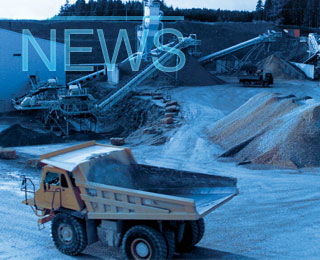Russia’s Federal Antimonopoly Service (FAS) has launched a case against stevedoring companies and ports in the Rostov region for refusing the transfer of shipments from Turkey over the past few months, against a backdrop of increasing imports into parts of the country.
The Russian competition watchdog initiated the case following a series of complaints against SK "Blue Wave", LLC " Don port", OAO " Rostov port ", OAO "Sailor" for refusing to handle Turkish deliveries since July of this year. The FAS noted that the reduced level of imports has led to higher cement prices as well as disruptions to supplies in the regional market.
According to its initial findings, the FAS said it found no reasonable grounds for the refusal of the Turkish cement and the companies in question are potentially violating competition laws. "To-date we have not received reasonable explanations by the regional ports for the reasons for rejection of grey cement imports from Turkey. Such behaviour of economic entities may indicate the presence of anti-competitive agreements," Natalia Kozhemyako, deputy head of FAS Russia Rostov, told local press.
Increased import volumes
After a considerable decline between 2008-09, imports into Russia have been rising steadily since. In 2010 the country received some 1.1Mt of imports, a figure which climbed to 2.9Mt a year later. According to a presentation delivered by Stanislav Aksenov of CMPro (Russia) at the recent Cemtech Prague 2013 conference, last year imports climbed to 5.1Mt, accounting for 7.8 per cent of the 65.2Mt of cement consumed by Russia in 2012 compared to almost five per cent the year before. Turkey accounted for the largest share, with volumes also arriving from Belarus, Iran and China.
Recent rises in imports have been attributed to a number of reasons, including the close proximity of foreign markets to certain consumption hubs, an attractive local pricing environment and Russia's accession to the World Trade Organisation last year which led to a removal of protective trade barriers. Speaking to local media at the end of last year, Mr Aksenov cited the Rostov-on-Don region, a city with a population of over 1m, as a prime area for imports as it is cheaper for cement to be shipped from Turkey by sea than to have it delivered by rail from the nearest largest facility some 400km away. Moreover, a recent report by Ernst & Young states that imports from Turkey and Iran, which accounted for 46 per cent of total imports in 2012, are due to the attractive sale prices and geographical proximity to major construction sites in southern Russia.
Russia's leading cement producer, Eurocement, has recently begun its battle against imports into Russia with the opening of its Podgorensky cement plant in the south’s Voronezh region. "If you look at the southern ports, you'll see that the amount of incoming cement has fallen sharply," Mr Skorokhod said. "That is because the Podgorensky plant came into being." The company has also said it may turn to the WTO for an antidumping investigation.
As Russian producers continue on their modernisation and expansion drive, which is expected to see volumes increase by a further 26.8Mt over the 2013-16 period, the fight to protect market positions and prevent a drop in profits is likely to intensify. Growth in import volumes is expected to slow this year by 7.8 per cent to 5.5Mta. However, as Ernst & Young caution: "If the share of imported cement continues to grow in the Russian market, competition will toughen and local manufacturers will experience still greater pressure. This will lead to a smaller share of Russian manufacturers and the curtailing of long-term investment programs aimed at industry modernisation."
